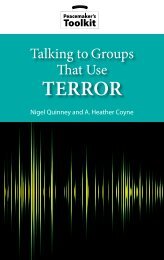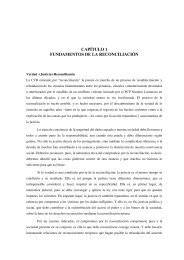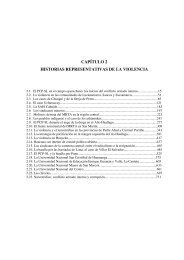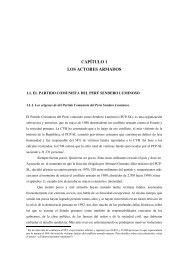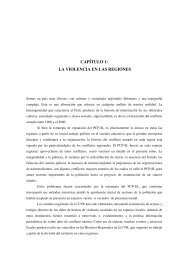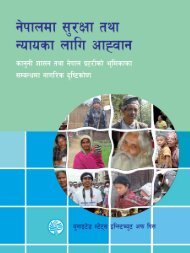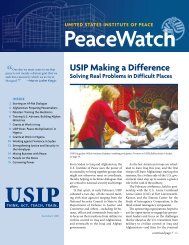Download PDF (5.43 MB) - ReliefWeb
Download PDF (5.43 MB) - ReliefWeb
Download PDF (5.43 MB) - ReliefWeb
Create successful ePaper yourself
Turn your PDF publications into a flip-book with our unique Google optimized e-Paper software.
SECTION 2 | Lesson 2.3 | practicing conflict analysis3. When all groups are finished, have students summarize their article andshare responses. If the article they have does not provide information thatallows them to answer all of the questions on the worksheet, have themresearch the remaining answers for homework.Alternative: If you have difficulty finding current conflicts for whichstudents have enough background context, you can have them analyze ahistorical conflict you have studied with them. Analyzing past conflictsis helpful practice, but it serves a different purpose. Analyzing currentconflicts helps in figuring out how to approach them. Analyzing pastconflicts is useful in determining lessons learned. Students can benefit fromboth exercises.Extension ActivityShow students photographs depictingconflicts and have students identify thelevel of conflict, i.e. interpersonal,intergroup, intragroup, etc.II. Discussion (10 minutes)Lead a discussion using some or all of the following questions:◆◆ Which questions are harder to answer? Why?◆◆ What is the value of analyzing a conflict?◆◆ How can analyzing a conflict help you figure out ways to approach it?◆◆ Imagine a complicated international conflict like the conflict in Iraq orAfghanistan. How can analyzing the conflict help those who want to buildpeace in these areas?◆◆ What might happen if you tried to resolve a conflict without knowingenough about it?Assessment:Cross the Line participation, Analyzing Conflict WorksheetPeacebuilding Toolkit for Educators53



